Cypress at Bayard Point, St. Johns River 30”x72” oil on Canvas 2009
Rowan Oak Cedar Sketch 6”x4”mixed media on paper 2024
The image of the tree plays an important role in our universal mythologies. We all know the Judeo-Christian tale of the Garden of Eden. We were plunged into a state of sin when a crafty serpent convinced a willing Eve to partake of the fruit from the tree of knowledge. She then shared the pomme with Adam and the rest is history, or mythology, whichever way you choose to look at it. Regardless of the bad rap trees got from this situation I do have a fondness for the arboreal universe.
The woods beckon me, always have. I feel comfort in dense forest. Certainly the abundant oxygen they exhale makes them our best ally. They also provide food, fuel, shelter and shade. When considering a natural economy where wealth is defined by the basic needs for our species’ survival, what better friends could we find?
There are special trees I visit when I travel. When my mother was alive I would take time while visiting her to trek to Rowan Oak in Oxford, Mississippi. This was the home of William Faulkner, twentieth century southern writer. Faulkner purchased the Ante-bellum house in 1930 and named the site Rowan Oak. This name calls to mind first the Rowan tree of Scotland, a symbol of peace and security along with the Oak, a symbol of strength and solitude. Rowan Oak certainly lives us to its name to this day.
The approaches to the primitive greek revival house are lined with ancient Eastern Red Cedar trees (Juniperus virginiana.) Legend has these trees being planted in order to sweeten the air after the Yellow Fever Epidemic of 1878. The mosquito borne disease killed more than 300 people in the area. We are not sure if the aromatic oils emitted from these magnificent specimens provided any health benefit to the nineteenth century inhabitants of the property, but they certainly are a welcoming alley for the twenty-first century visitor.
I spent many hours during the last fifty years communing with the cedars at Rowan Oak. Now I am in my seventies am memorializing trees from my past in a series of paintings. The Cedars of Rowan Oak are at the top of my list.
Other trees at Roan Oak are significant and will find their way into this body of work. Behind the house next to an out-building is a fine example of a mature Osage Orange (Maclura pomifera.) Had Eve handed this sticky, lumpy fruit to Adam we would all still be enjoying the naked bliss of the Garden of Eden. The lumpy ball is particularly useless in culinary pursuits but can be effective as bait for cockroaches. We kept them under our beds at Millsaps College because the campus in Jackson, Mississippi, was roach-infested.
The beauty of the tree which is also called Bois d’Arc, often shortened to the colloquial “Bodock”, is the strength of its wood. The Osage tribe of indigenous peoples used the wood for making Bows for arrows. Regardless, this twisted and contorted tree has been a constant source of inspiration for me.
I look forward to making a painting of this. Hopefully it will do it justice.
One of the massive ancient cedars at Rowan Oak.
Having lived in Florida for the past thirty years I’ve found that the adventurer need not go deep into the woods to find ancient Bald Cypress (Taxodium distichum.) These trees along with their close cousins Pond Cypress (Taxodium ascendens) are treasures in the Southeastern United States. Unfortunately most of the magnificent creatures were slaughtered during the nineteenth century by greedy woodsmen. Many of the ones we have left survived because they were hollow therefore useless to the trade.
They defined a primal landscape and were home to various creatures including the presumed extinct Ivory Billed Woodpecker. Some of the thousand year old logs were harvested and floated down the St. Johns River. Many became lodged in the muck of the river’s bottom and have been preserved. They lie in state in the anaerobic conditions defying decay. An industry has sprung up based on their salvage and milling. Salvaged logs from the muck of the river often have holes carved in them by the Ivory Billed Woodpecker.
Small painting I made about the magnolia trees on the Waccasassa River. I crafted the frame from cypress reclaimed from the bottom of the St. Johns River
Bald Cypress O’Leno State Park. Santa Fe River Rise.
This article prompted me to go through hundreds of files. I’ll drop in several images. Some are photographs and some are paintings of many favorite trees.
Cypress at Nanih Waiya, 60”x40” oil on canvas 2009
This painting was made to commemorate a giant cypress in a slough near the Nanih Waiya mound in eastern Mississippi. This sacred land was constructed at point the Choctaw and Chickasaw tribes split. The Chickasaw took the land to the north and the Choctaw to the south. The site was a sacred ceremonial mound.
Both photos above were taken at Palestine Lake, south of Olustee, Florida. The lake holds dozens of ancient Pond Cypress.
This introduction to the Tree Hugger series is one of many as I organize this body of work. The end result will be around a dozen oil paintings of significant trees. Join me on the paid site as I decide which trees to memorialize and start working on the canvasses. I Feel that there will be a variety of sizes as I lay out the project. These decisions are important when planning work that will be exhibited.
I will also let subscribers in on some painting techniques I developed during the last fifty years of painting. Meanwhile, I will send sketches to participants when they join us on the paid plan. Look forward to seeing you soon.
.




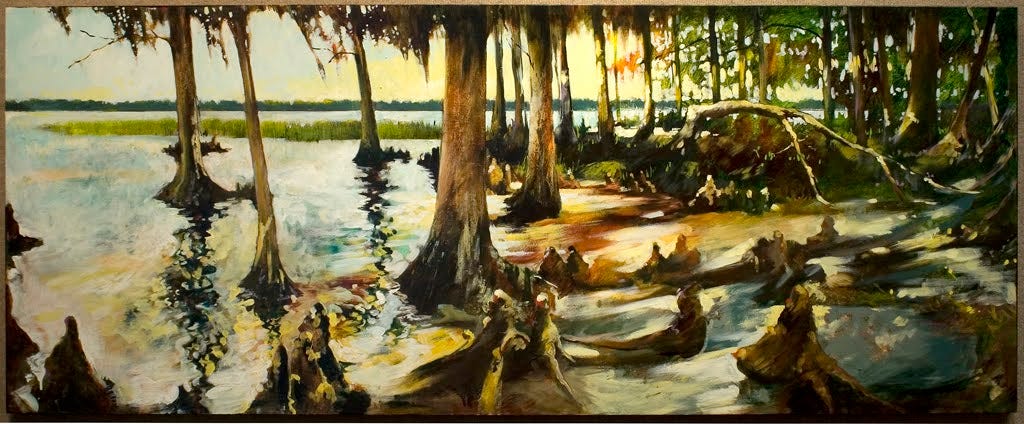



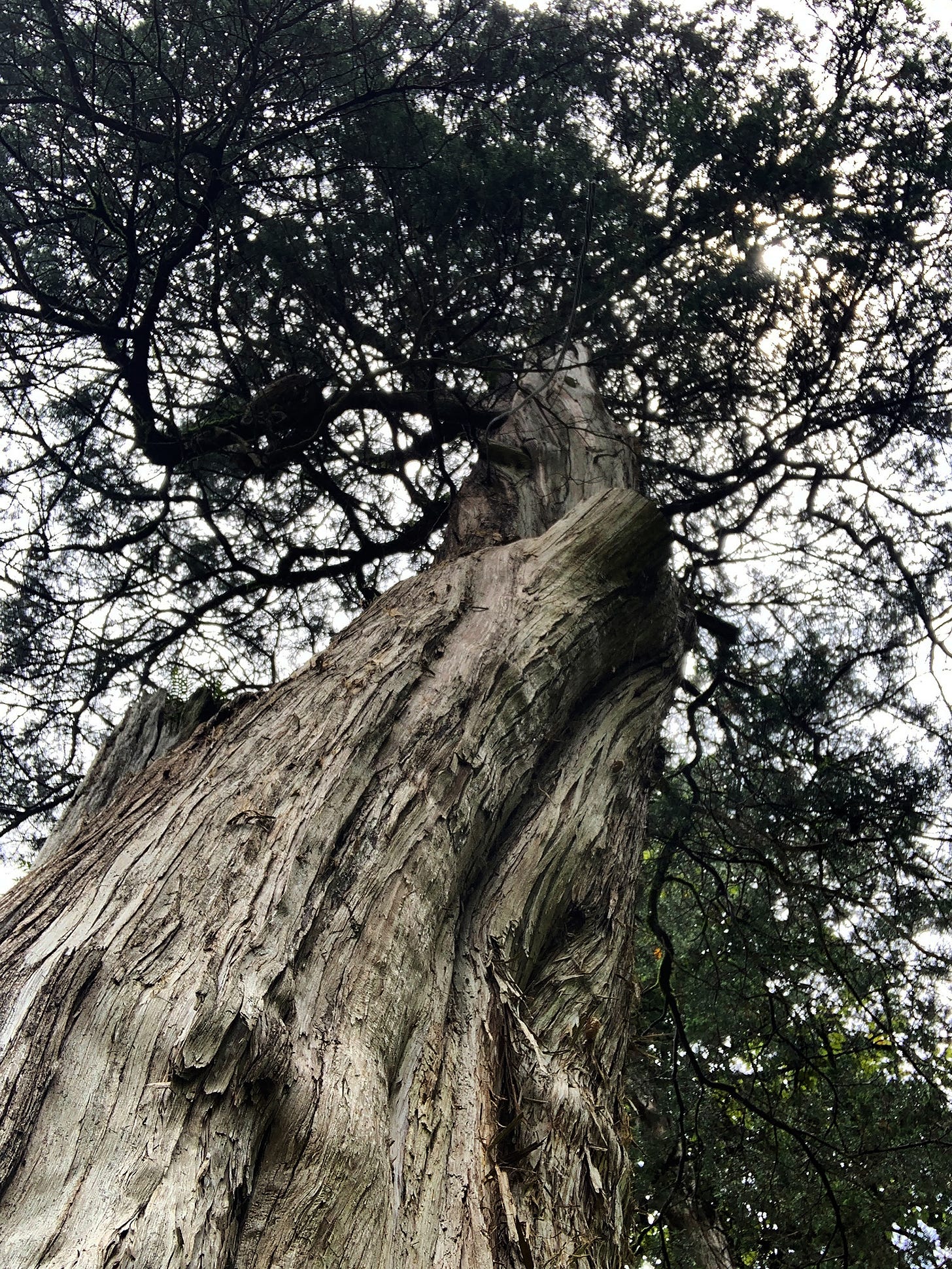

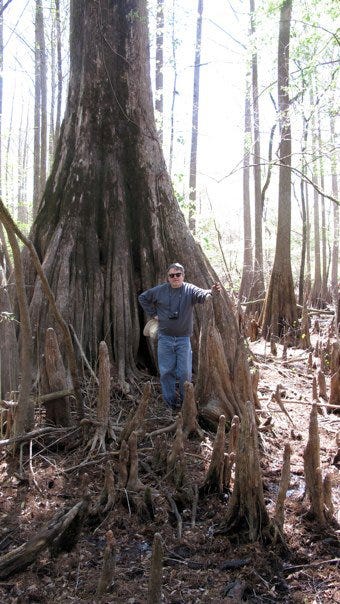
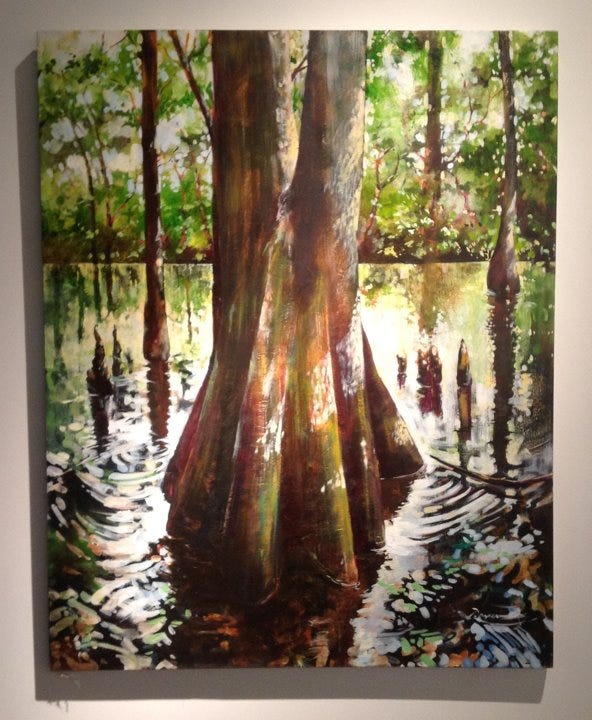
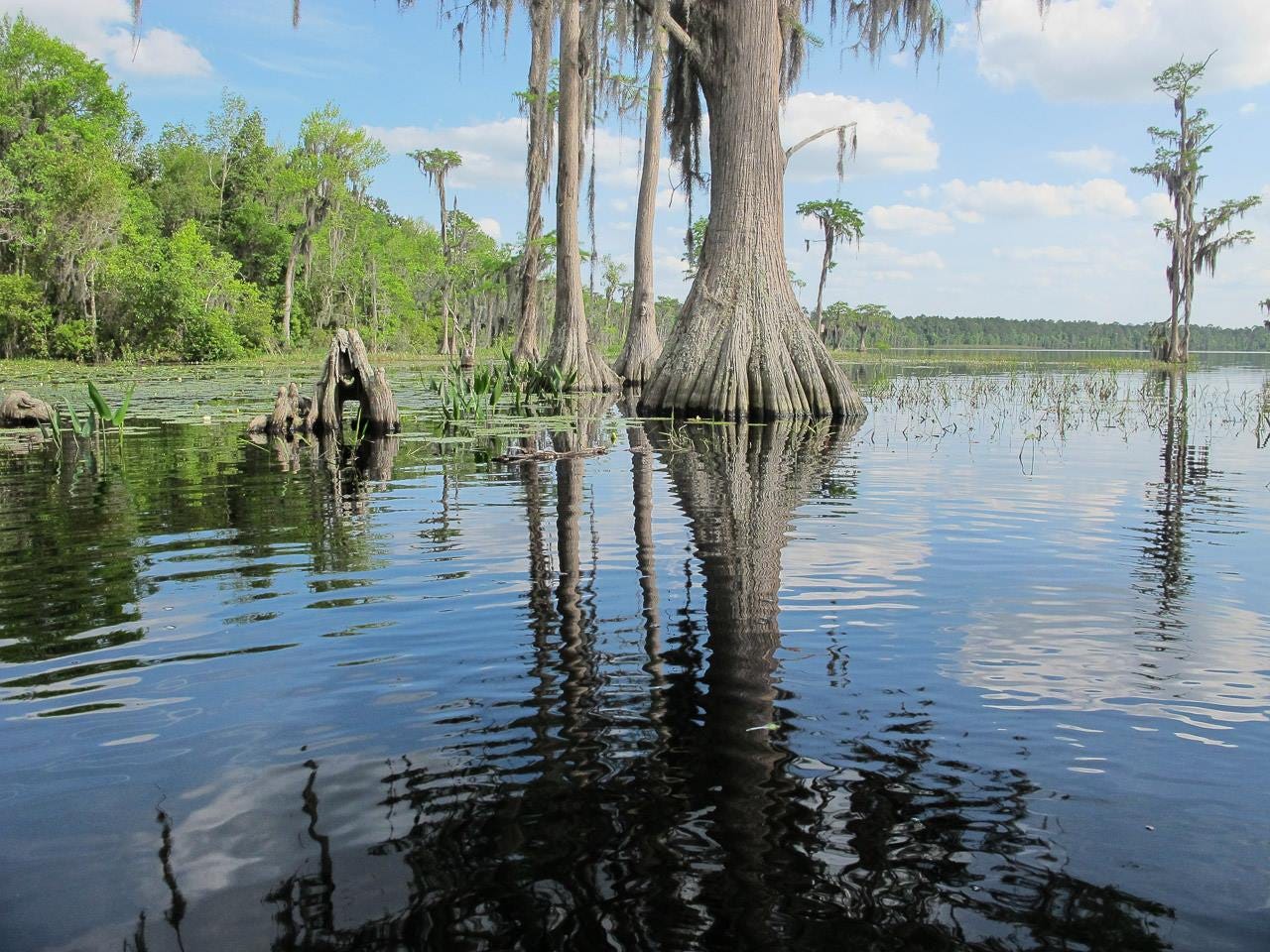
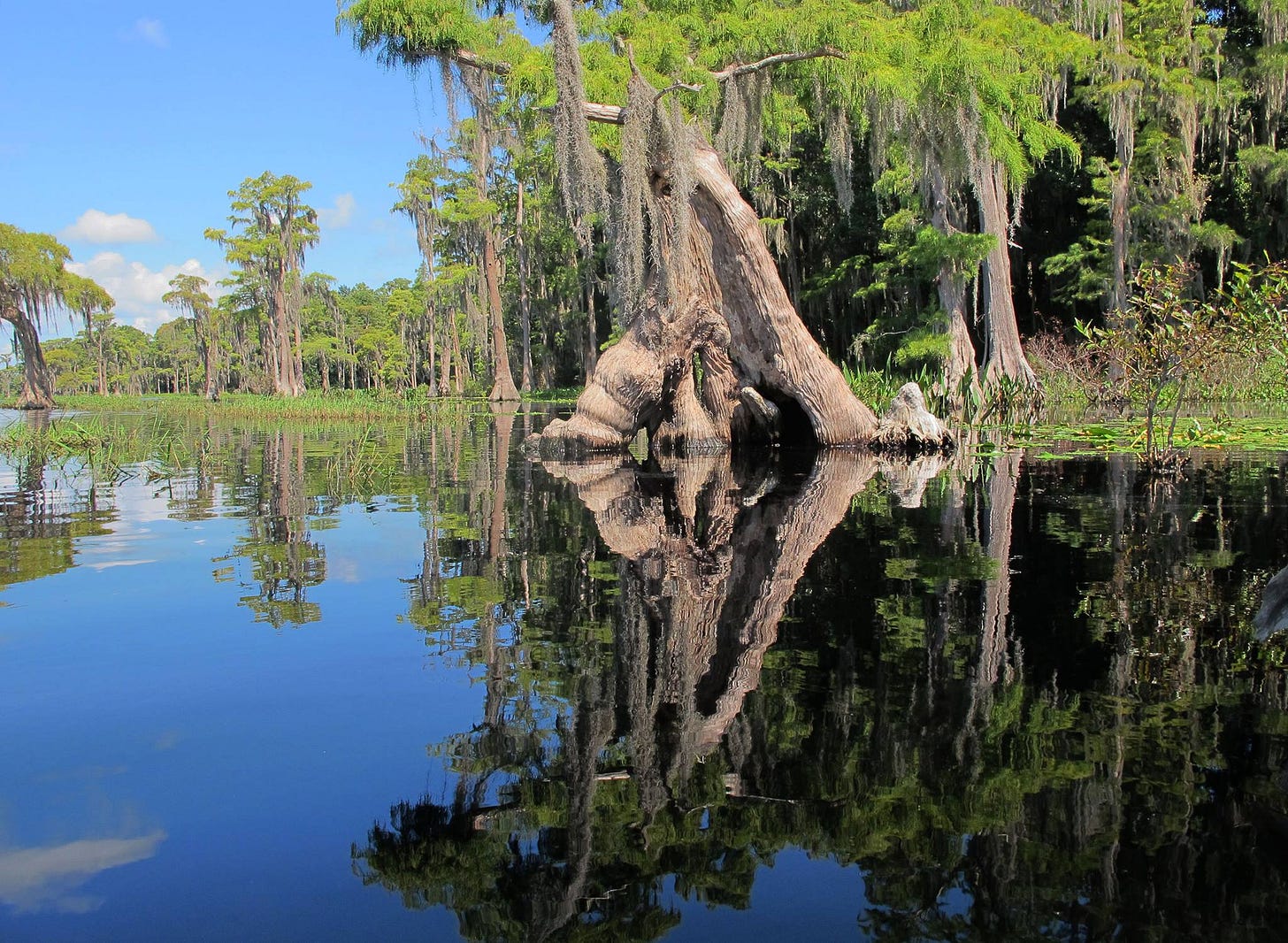

For Sure. Glad it arrived well!
Jim, I was so taken by the tree gift, it was a wonderful and uplifting surprise! Thank you and best wishes for all your future postings, I enjoy them immensely